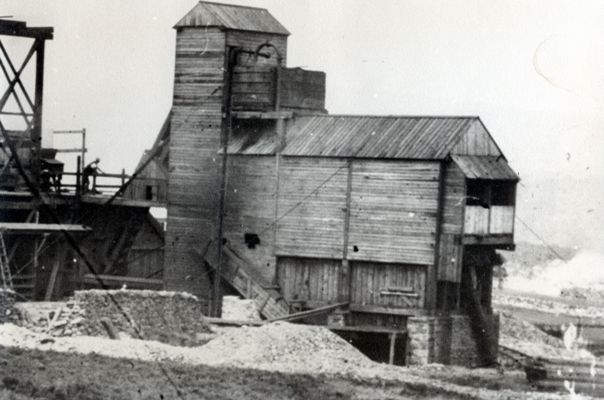The Threshfield-Bordley coalfield is the most significant area of coal in Upper Wharfedale and it has been extensively worked from Backstone Edge to Boss Moor. The Low Smelt Mill at Grassington was burning coal from the Threshfield pits in the late 17th century, but some of them are much older. For example, in June 1607, Lancelot Johnson was sinking a coal pit at Threshfield. He was helped by Henry Calvert of Rylstone, at sevenpence a day, and then by Thomas Fletcher. In May 1613, the collier Hepper agreed to sink a pit on Threshfield Moor for £3 until he found coal. In August of the same year John Bradley was working there.
In December 1756, Michael Lambert paid £5 for one year’s rent for Threshfield Colliery. Nothing else is known of the pits until the mid 19th century, when they were worked with pits on Grassington Moor. This information, along with data from the Mines Inspector’s Annual Reports, may be tabulated as follows:-
Company: 1847-1848 Joseph Lambert 1848-1854 Mrs Lambert 1882-1886 William Lambert 1887-1888 Paley & Fryer 1889-1900 W. & J. Dolphin 1902-1905 John Delaney Manager: 1882-1889 W. Lambert 1902-1904 R.W. Crossland 1905 J.L. Marshall Comment: 1900 1903 Standing 1905 Abandoned
Employment: UNDERGROUND SURFACE 1882-1893 ? ? 1894 2 1 1895 0 0 1896-1899 2 1 1900 0 0 1902 7 4 1903 0 0 1904 5 3 1905 26 5
To this can be added information from the censuses of 1841 to 1871, which gives the number of colliers living in the surrounding villages:
YEAR COLLIERS 1841 3 1861 1 1871 8
In 1871, William Lambert was described as a coal proprietor and farmer, aged 40. His and the other late 19th century workings were probably from two large shafts at SD96936302 and SD96846309, which were 13½ and 14½ fathoms deep respectively. They were drained by a very small cross-section adit, driven from SD97476308 at an elevation of 830 feet, but the miners were stopped by old workings.
On the morning of November 22nd 1873, Thomas Paley, aged 49, and Richard Latham, aged 14, were descending one of the Threshfield pits in a ‘scoop’ by means of a horse and gin. As the horse began to move, however, the chain slipped off an improperly constituted drum, and they were thrown out and fell to their deaths at the bottom of the shaft. The Inspector of Mines found that, in contravention of the 22nd General Rule, there were neither flanges nor horns on the winding drum. The chain, which had been coiled around the drum close to the top, slipped off causing a sudden jerk which threw the two out of the ‘scoop’. William Lambert, the owner, was prosecuted at Skipton Magistrates Court, where he was fined £3 which the inspector gave to the relatives of the dead.
In the late 19th century John Delaney worked three large quarries at Broughton near Skipton, Thornton in Craven and Skirethorns, where he had commercial limekilns. This last quarry was linked to Threshfield colliery by a light railway, which was about 1310 yards long and had a single span bridge to cross Grysdale Beck. The course of the railway and the bridge abutments can still be seen.
Delaney’s mine worked an area of coal surrounded by old workings and crossed by a number of faults, all of which frustrated any attempt at systematic extraction. The shaft, at SD97326285, was 10½ fathoms deep and was wound by a small steam winder. The seam, which Delaney called the Caton Coal, was 34 inches thick, but was split into two leaves by a central dirt band two inches thick. The coal was of inferior quality, however, and a washery was built at the pit head to improve it. This last feature was unique amongst the small collieries in the Yorkshire Dales, if the true Coal Measures pits at Ingleton are ignored.
Whatever improvements the washery made were short-lived, however, because the miners quickly came across the old workings and ran out of coal. When W. Walker, the Mines Inspector, signed the Abandonment Plan on November 4th 1905 he noted that no details of these old workings could be found and that they were very ancient.
- Gill, M.C. The Wharfedale Mines (British Mining No.49, 1994)
- Gill, M.C. “The Great Dales Coalfield, Eastern Areas”, British Mining No.86, 2008, pp.68-108.


